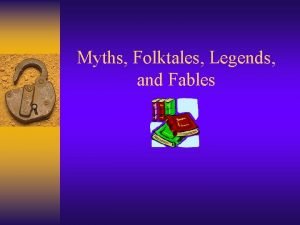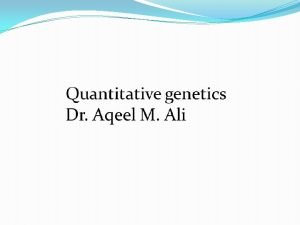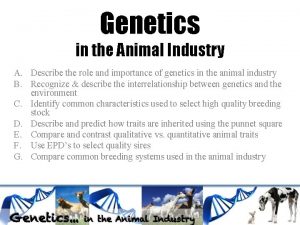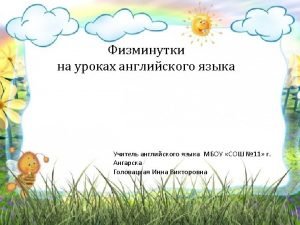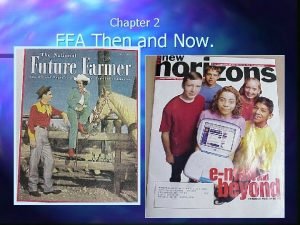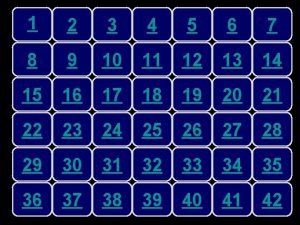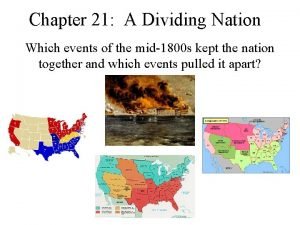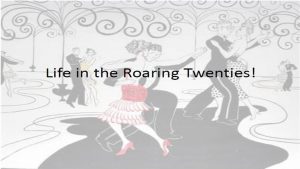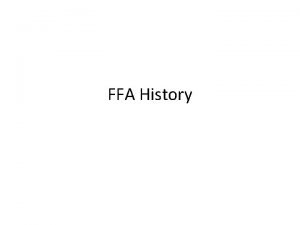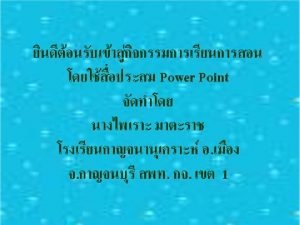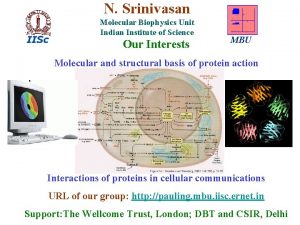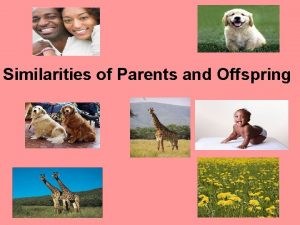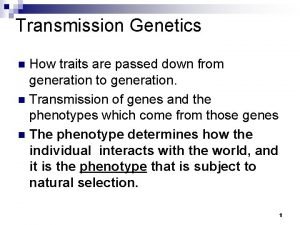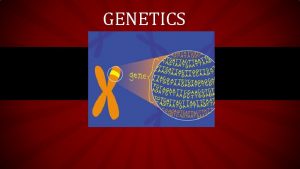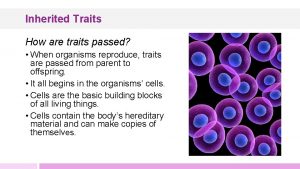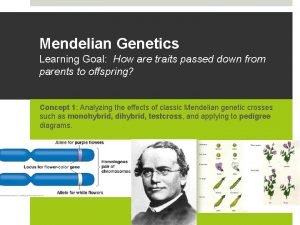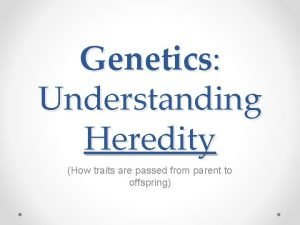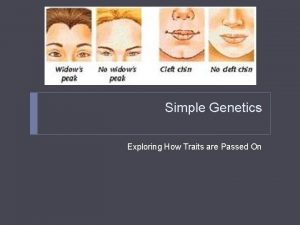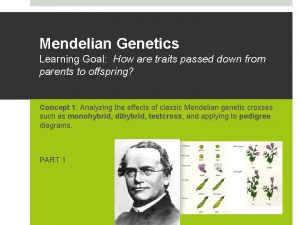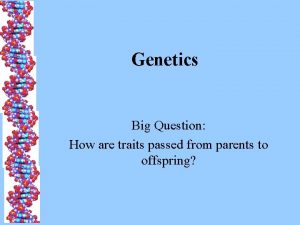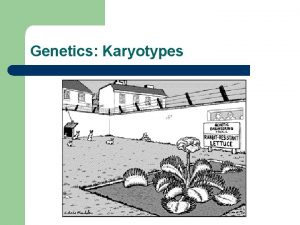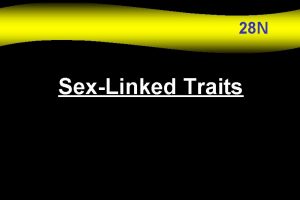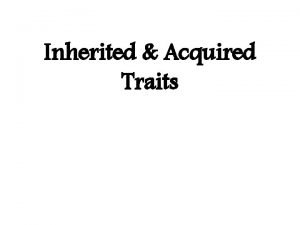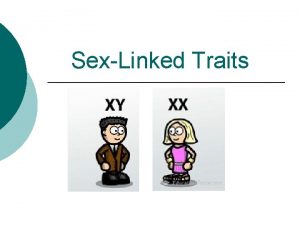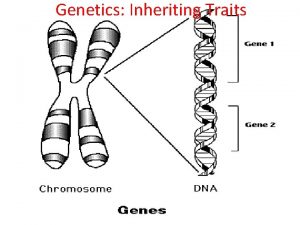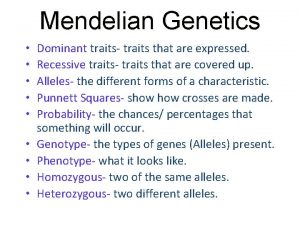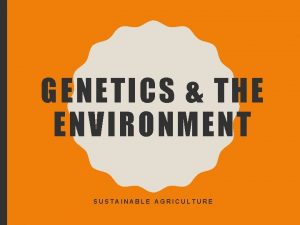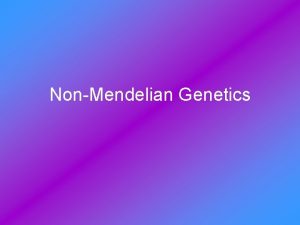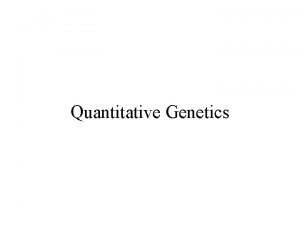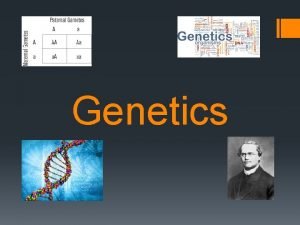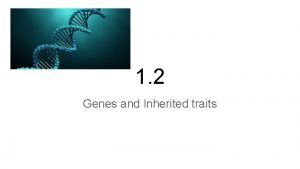Genetics EQ How are traits passed down through




































- Slides: 36

Genetics EQ: How are traits passed down through generations?

Gregor Mendel = Father of Genetics 1857 Worked with garden pea plant

Mendel’s Experiments • Peas are a “model system. ” • • Small, easy to grow. • Makes them convenient to study. • Help explain how organisms inherit traits • Started with “true breeding” plants • Trait: specific characteristic (e. g. , seed color, plant height) of an individual • Hybrid: created from cross of true-breeding individuals

Pollination and Fertilization in Plants have the ability to self-pollinate (self-fertilize) because they have both reproductive parts. Male part Female part

Cross-Pollination Taking pollen from one plant and using it to fertilize the eggs of another plant Pollen

Pea Characteristics of Mendel’s peas Mendel studied these characteristics to observe patterns in traits across generations.

Mendel’s Crosses When Mendel crossed plants with contrasting traits, the hybrid offspring showed traits of only one parent.

Dominant and Recessive Traits When a yellow pea plant is crossed with a green pea plant, the resulting offspring are yellow. Yellow seed color is to green seed color. dominant Green seed color is recessive to yellow seed color.

Principle of Dominance • Some alleles are dominant, some recessive. • An organism with at least one dominant allele will exhibit that trait. • An organism with a recessive allele will exhibit the trait only in the absence of a dominant allele. dominant recessive dominant

Genes and Alleles Traits (seed shape, seed color) are determined by genes. • Genes: passed from one generation to the next; genetic code that determines an individual’s characteristics Forms of traits (yellow/green, round/wrinkled) are called alleles. • Alleles: the different forms of a gene. Characteristics such as pod color are determined by genes. Yellow and green pod colors are determined by alleles. The allele for green pods is recessive to the allele for yellow.

The P 1 and F 1 Generation P 1 generation True-breeding F 1 generation Hybrids Let’s figure out how we can predict the F 1 gen from the P 1 gen.

Monohybrid Cross = One Trait “Height” Tall Pea x Short Pea T = Dominant t = Recessive TT x tt “Homozygous Dominant” “True Breeding” = Homozygous X “Homozygous Recessive”

Heterozygous and Homozygous: has two identical alleles for a gene Heterozygous: has two different alleles for a gene Which are: homozygous? 1, 4 heterozygous? 2, 3 1 2 3 4

1 st LAW OF HEREDITY “Law of Segregation” = – The 2 alleles for each trait must separate when gametes (sperm/egg) are formed. -A parent passes on, at random, only one allele for each trait to each offspring A aa

Segregation Random Fertilization

The Formation of Gametes Eggs and sperm Fertilization

Making a Punnett Square A cross of birds: Beak size (B, b) Possible gametes Gametes for a parent along one side Combine gamete genotypes

Generations P 1 = Parent Plants -True breed Tall x True breed Short TT x tt F 1 = First Generation (children) What’s the probability that the offspring will be tall? ____ Short? _______ Genotype of offspring? _______ Genotype=genetic makeup of organism Phenotype of offspring? _______ Phenotype=physical characteristics

Law of Probability “Rules of Chance” “Odds” Numerator = winner Denominator = # horses 1/12 20: 1 5% 1: 12 “odd” 10: 1 10% 8% “chance” 2: 1 50%

Probability? “Chance” of getting a tail? “Chance” of getting snake eyes on two dice?

“Chance” of getting a boy? Male: Female XY XX ½ 1: 2 odd Boy 1: 2 odd Girl 50% chance Survey Large Number 1: 1

Alleles: Tall = Dominant (T) Short = Recessive (t) Dominant = Trait Observed Recessive = Trait that disappeared Genotype Phenotype TT = Tall Tt = Tall tt = Short Can’t always know an organisms genotype by looking at its phenotype?

Homozygous Dominant Homozygous Recessive tt TT T t Tt Heterozygous

Change of colors to follow the parental alleles: F 1 Tt x Tt Combination of Letters/Alleles? F 2 3 Tall and 1 Short TT Tt Tt tt

The F 2 Generation – created from a cross of two F 1 generation offspring. What proportion of F 2 offspring were short? 1/4 What proportion of F 2 offspring were tall? 3/4

Dihybrid Crosses: Crossing for 2 characteristics/ traits

EXAMPLE • 2 TRAITS: Seed Shape and Seed Color • Shape =Round (R) was dominant to Wrinkled (r) • Color = Yellow (Y) was dominant to Green (y)

Making a Punnett Square: Two Factors A cross of pea plants: size (T, t) and pod color (G, g) All possible gametes All gametes for a parent along one side Combine gamete genotypes

Round Yellow Seeds x Wrinkled Green Seeds Homozygous dominant for both traits _RRYY_(Genotype) Use FOIL to help you figure out the combinations (RR)(YY) F(irst) RY O(uter) RY I(nner) RY L(ast) RY Homozygous recessive for both traits 1. We need to first find all the possible gamete combinations of each parent ry ry Use FOIL to help you figure out the combinations (rr)(yy) F(irst) ry O(uter) ry I(nner) ry L(ast) ry gametes 2. Place your gametes in a Punnett square. RY (Genotype) ___rryy____ RY RY RY gametes

3. Fill in the Punnett square. ry RY Rr. Yy ry Rr. Yy Rr. Yy ry Rr. Yy So the P 1 cross of true breeding plants: Round Yellow Seeds P 1 Wrinkled Green Seeds rryy RRYY produced F 1 Rr. Yy All plants Round Yellow Seeds

Now let’s cross two F 1 generation plants. 1. We need to first find all the possible gamete combinations of each parent Use FOIL! Rr. Yy RY Ry r. Y ry

The presence of one specific allele for one trait has no impact on the presence of a specific allele for the second trait. The two pairs of alleles segregate independently of each other. Four classes of gametes (RY, Ry, r. Y, and ry) would be produced in equal amounts. RY Ry Rr. Yy r. Y ry

2. Place your gametes in a Punnett square. RY RY Ry r. Y ry Ry r. Y RY Ry r. Y ry ry RY Ry r. Y ry


Rr. Yy Round Yellow Round Green Rr. Yy Wrinkled Yellow Wrinkled Green

ND 2 LAW OF HEREDITY • Law of Independent Assortment = genes for different traits are inherited “independently” of each other. • Rr. Yy = the R and r will separate as well as the Y and y. • Alleles can recombine in 4 different ways.
 Mikael ferm
Mikael ferm Difference between myth legend and fable
Difference between myth legend and fable What role does dan cody play in gatsby’s dream/life
What role does dan cody play in gatsby’s dream/life Carbon dioxide gas is passed through lime water
Carbon dioxide gas is passed through lime water Qualitative traits vs quantitative traits
Qualitative traits vs quantitative traits Qualitative traits vs quantitative traits
Qualitative traits vs quantitative traits Qualitative traits vs quantitative traits
Qualitative traits vs quantitative traits There's a place where mercy reigns and never dies
There's a place where mercy reigns and never dies Why doesn’t air pressure crush your desk?
Why doesn’t air pressure crush your desk? Our father all of heaven roars your name lyrics
Our father all of heaven roars your name lyrics I fled him down the nights and down the days
I fled him down the nights and down the days Hands on hips text
Hands on hips text Sin entered through one man
Sin entered through one man Tarnow fletcher furcation classification
Tarnow fletcher furcation classification The night of the scorpion by nissim ezekiel
The night of the scorpion by nissim ezekiel Methods of timber conversion
Methods of timber conversion Public law 740 passed by congress
Public law 740 passed by congress Construction of the union pacific railroad pushed west from
Construction of the union pacific railroad pushed west from A dividing nation
A dividing nation The dmca was drafted and passed by the ____.
The dmca was drafted and passed by the ____. I hear you've passed your exam. congratulations – ____
I hear you've passed your exam. congratulations – ____ Fell asleep
Fell asleep Why was the butler act passed
Why was the butler act passed What act was passed in 1917 ffa
What act was passed in 1917 ffa Uat passed
Uat passed Verstat
Verstat Do mandated reporters have immunity under canra
Do mandated reporters have immunity under canra Wanted a just right government cause and effect
Wanted a just right government cause and effect Flocabul
Flocabul Zero conditional affirmative negative interrogative
Zero conditional affirmative negative interrogative If you studied hard you would have passed the exam
If you studied hard you would have passed the exam Verstat=tn-validation-passed
Verstat=tn-validation-passed N. srinivasan iisc
N. srinivasan iisc Why did isolationist want these laws passed
Why did isolationist want these laws passed How do offspring inherit traits
How do offspring inherit traits I passed out
I passed out Dr shabeer jeeva passed away
Dr shabeer jeeva passed away

